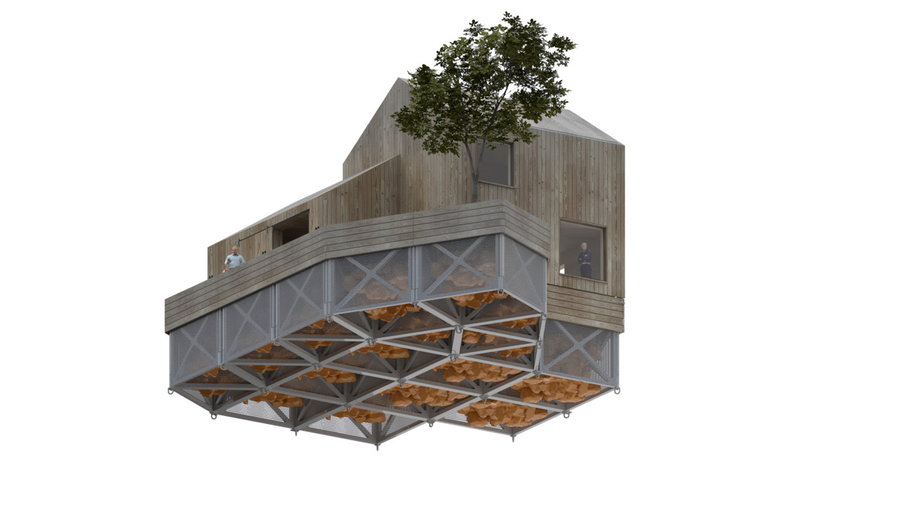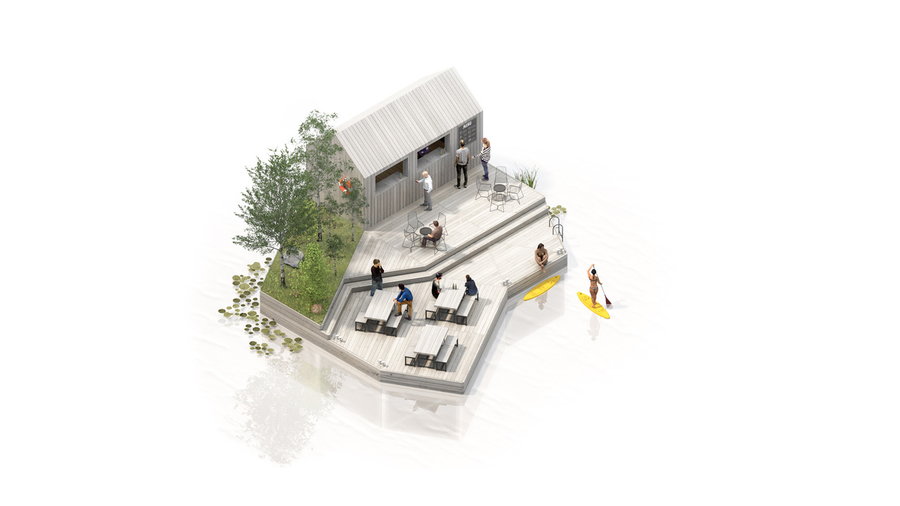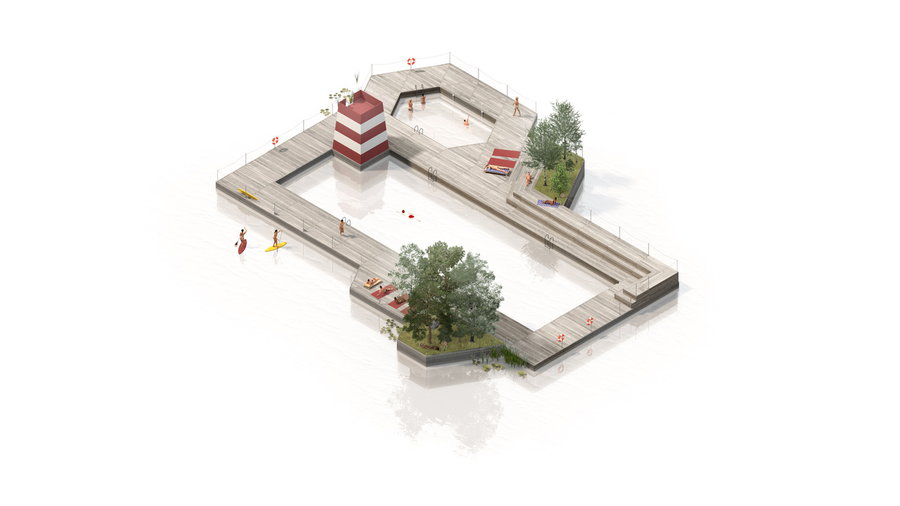Land on Water: A Modular Floating Building System by MAST
Rarely have floating communities seemed quite as achievable, affordable, and beautiful as “Land on Water,” a proposal for a modular building system by Danish architecture studio MAST. Take one look at these grassy manmade islands connecting small neighborhoods of houseboats to each other and communal green spaces, and you’ll likely be able to imagine living there. Minimalist but down to earth, the simple wooden structures rest on special foundations that are both adaptable and beneficial to the local marine life.

Responding to the threat of rising sea levels and other hazards of climate change, Land on Water envisions a flexible, sustainable solution that totally eliminates the need for environmentally harmful materials like styrofoam. Floating homes, campsites, community centers, small parks, and structures supporting all kinds of other functions rest on flat-pack mesh cages made of reinforced recycled plastic and filled with upcycled flotation materials.

If the needs of the occupants change and they want to expand or increase the weight of whatever the foundations are supporting, they can simply add more flotation materials to the foundations. MAST imagines that such a system could help avoid the waste that plagued the architecture of the 20th century, which was too rigid to support changing needs and lifestyles.


“The system was inspired by gabion construction, an ancient technology which utilizes mesh cages filled with rubble to create extremely sturdy, low cost foundations,” says MAST. “In this case the concept is inverted; and the modular ‘cages’ are filled with locally sourced, upcycled flotation supporting the weight of any structure built on top. They are also much more adaptable than existing solutions since flotation can be added or adjusted at any time if weight is added or shifted around above.”
“‘Land on Water promises a far better underwater environment than existing solutions. While steel and concrete foundations are commonly treated with toxic anti-fouling paints, Land on Water provides an ideal habitat for fish and crustaceans and an anchor point for mollusks and seaweeds.”


MAST says a floating community could be as small as several homes belonging to members of a single family or as large as an entire city. The architects imagine its use everywhere from houses in Seattle to campsites on an Oslo fjord and saunas on the riverfront of Hobart in Australia.

The modules can be assembled into all kinds of configurations, incorporating areas of open water connected by walkways as sheltered places to fish and swim. Large terraced decks can double as outdoor auditoriums and dance floors. The bases are also strong enough to support the growth of mature trees, potentially allowing for the creation of small floating forests.

If any of that sounds unrealistic to you, here’s a great example where a similar floating neighborhood system worked in the real world. Designed by Dutch firm Rohmer, these 75 mixed-income units on Steigereiland on the Netherlands’ IJ Lake are also designed to grow and change. However, this community is made of more conventional materials like steel and concrete. While both concepts have the potential to help us envision a new way of living, MAST’s design improves upon the idea with its focus on sustainability.




